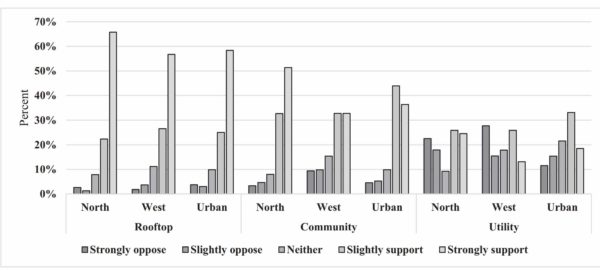After implementing SB 52 last fall, ten rural Ohio jurisdictions have banned large “single interconnection” wind or solar facilities in unincorporated areas.
Ten Ohio counties have banned large-scale wind and solar farms, and two more are currently considering a ban. This was enabled by Ohio putting into law SB 52 in the fall of 2021.
This news was brought to the attention of pv magazine USA by local reporters at the Ohio Capital Journal. The list of counties that have officially banned wind and/or solar energy is as follows:
- Seneca County, Nov. 23
- Medina County, Jan. 25
- Logan County, April 14
- Hancock County, April 19
- Allen County, April 24
- Auglaize County, April 26
- Union County, June 15 large solar projects (not wind)
- Butler County, June 23
- Crawford County may ban wind farms, though reports show that a potential wind farm developer has submitted enough signatures to place the issue on the ballot in November
- Knox County, Aug. 11 banning large wind projects (not solar)
The Journal notes that Ottawa & Delaware Counties are discussing the topic as well.
Allen County’s ban affects essentially the entire county minus some downtown areas, according to the map provided on the county website.
The specific language in SB 52 that gives control over the local jurisdiction is:
Sec. 303.58. (A) The board of county commissioners may adopt a resolution designating all or part of the unincorporated area of a county as a restricted area prohibiting the construction of any or all of the following:
(1) An economically significant wind farm;
(2) A large wind farm;
(3) A large solar facility.
A “large solar facility,” per the definitions of SB 52, is defined in section 4906.01 of the Revised Code: (G) “Large solar facility” means an electric generating plant that consists of solar panels and associated facilities with a single interconnection to the electrical grid that is a major utility facility.
None of the state level documents reference specific size limits for solar farms. Allen County’s ban notes that landowners “have the right and ability to contract with wind and solar companies
for operations under 50MW.” The county’s meeting minutes note that while many residents support wind and solar, they reject large industrial facilities.
Logan County also says that above 50 MW is banned, while also placing restrictions on projects 5 to 50 MW.
Notably, many Ohio politicians – all the way up to the Governor’s office – are embroiled in a bribery scandal implemented by coal facility owners. Tens of millions of dollars were paid to various politicians and intermediaries to implement laws that gave billions in incentives to coal and nuclear facilities.
In terms of popularity, rooftop solar is highly supported by mostly everyone. Support falls off sharply for any solar on the ground, however, some ground solar was better received than others.

Research in New York State suggests that support shifts as solar power facilities approach approximately 50 acres. Larger facilities that sell all of their electricity into the transmission market are given less support, whereas facilities defined as ‘community solar,’ and do not cross over multiple parcels, have higher levels of support.
The State of Ohio is currently developing laws for community solar, though none have yet been implemented as law.



